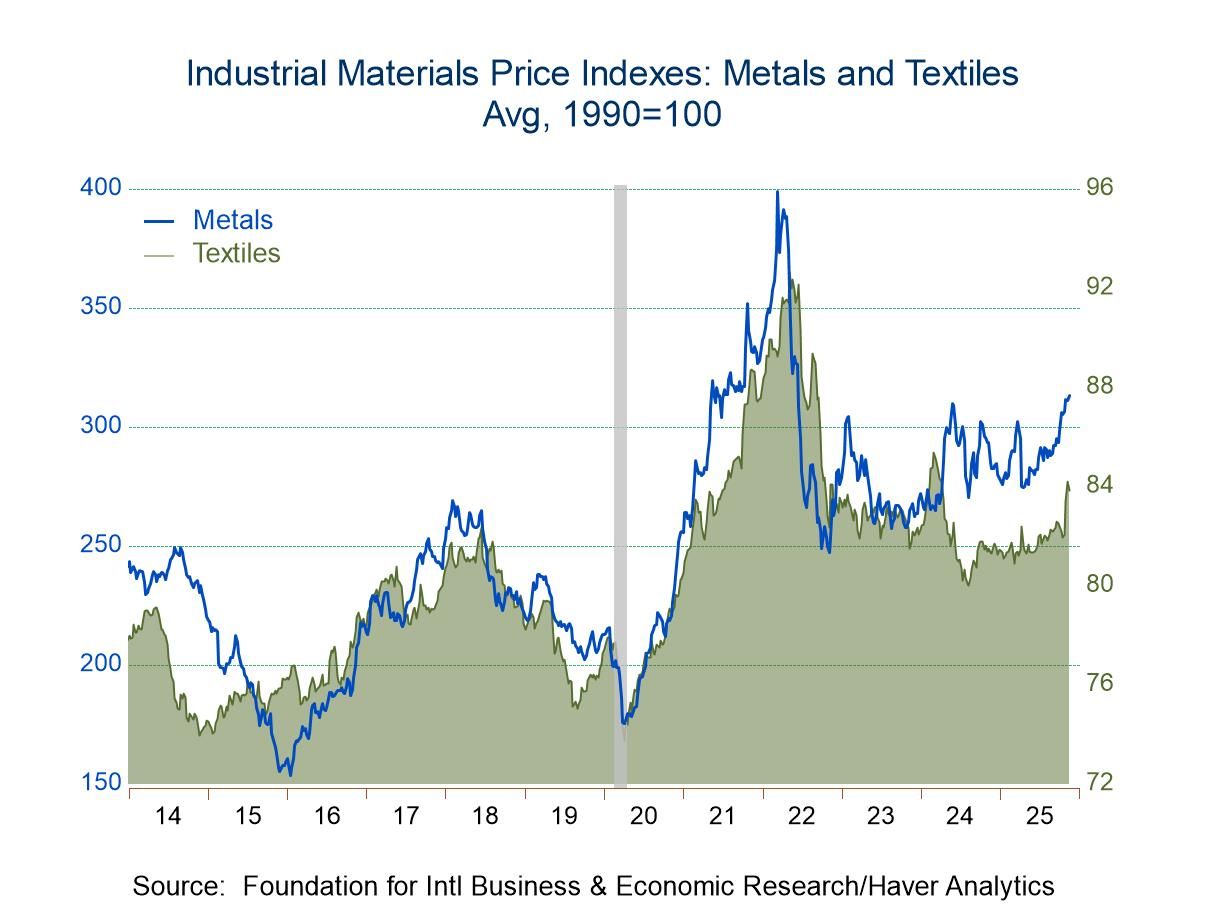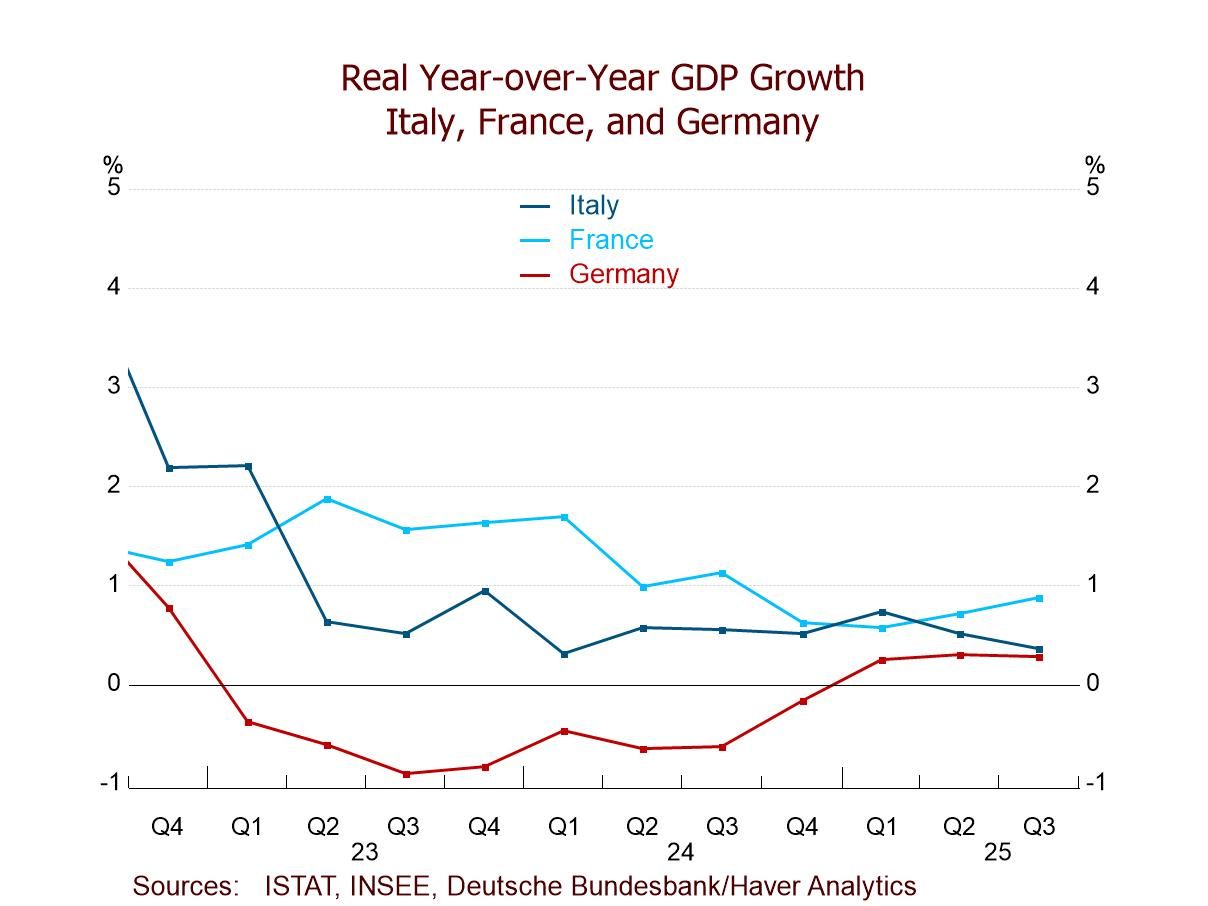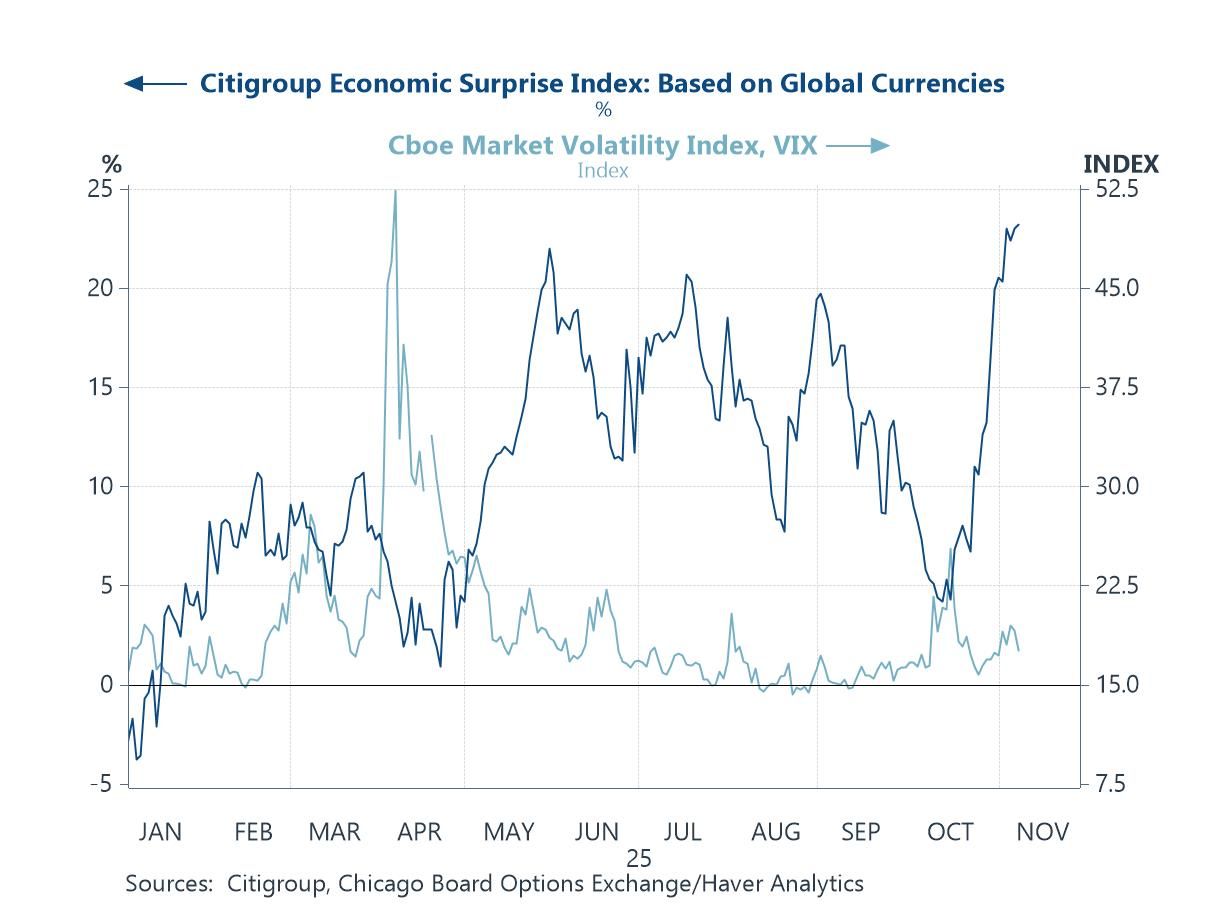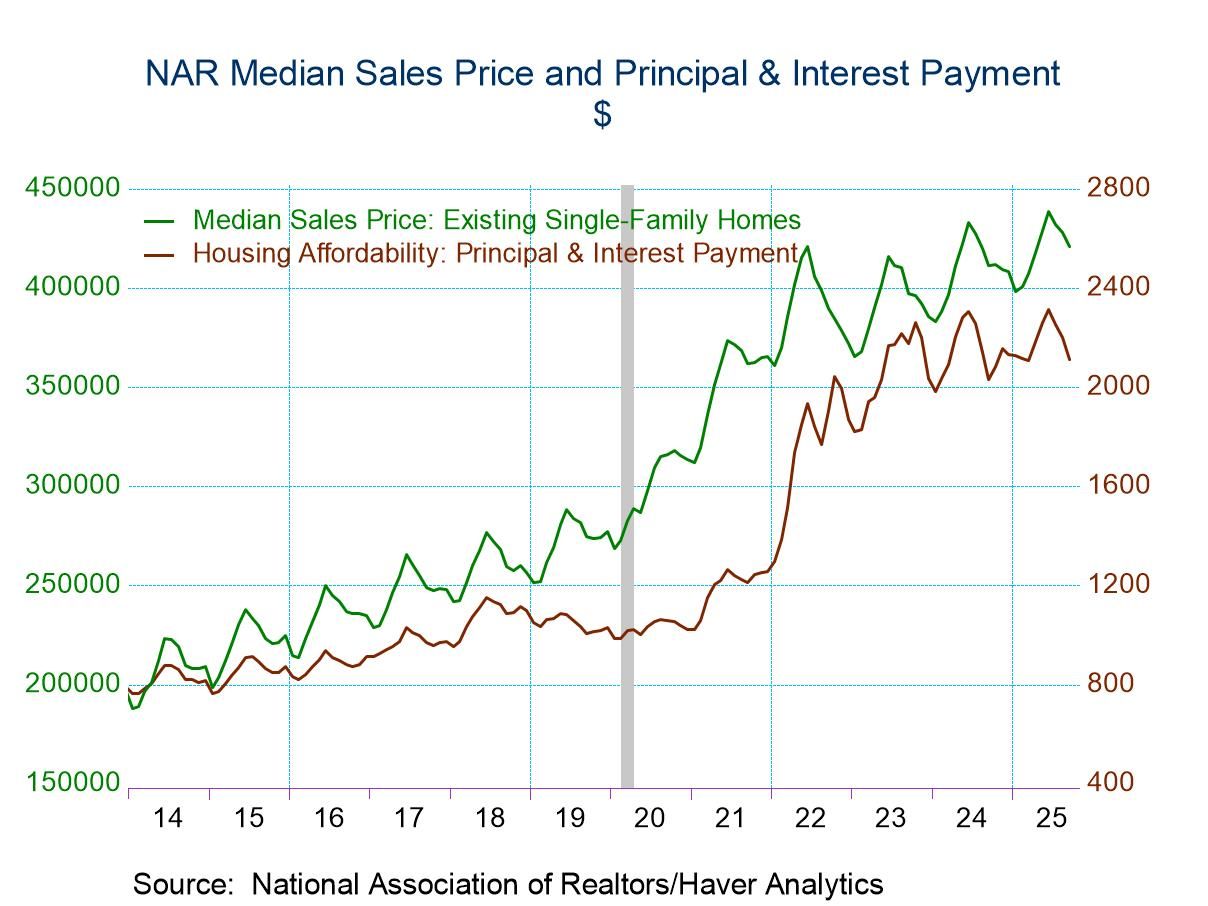 Global| Dec 07 2021
Global| Dec 07 2021EMU and Other Central Banks: The Inflation Conundrum (Copy)

The ZEW Survey shows weakening current conditions, slightly weaker expectations, and a sharp drop in inflation expectations as short- and long-term interest rate expectations rise and stock market expectations improve in the United States, Germany and across the EMU.
The economics situation has mid-range percentile standings with the U.S. and the euro area showing standings in the 60-percentile decile. Germany has a standing below its 50-percentile mark at 47.4%, placing it below its historic median. The situation eroded by 11.6 points on average this month for these three economic units.
Economic expectation surveys are offered for the U.S. and for Germany. They both register in the 50th decile, barely above their respective medians; the expectations readings drop by a small amount on average in December with underlying data showing Germany a bit lower and the U.S. just a tick stronger month-to-month.
Inflation expectations fell broadly in December. The average drop for the group is a decline of 19.7 diffusion index points. The standings for inflation expectations are in the low teens or lower. Inflation itself is still high in Germany, the EMU, and especially in the U.S. But inflation expectations that had jumped in February and March of this year have since cooled. After the jump high readings lingered around with net diffusion readings in the 70s for these three regions/countries for about six months, then they began to break lower in July or August. They continued to weaken and posted negative net values in November and deeper negative net diffusion readings in December. As of December, the net diffusion reading averages -34.6 compared to -14.9 in November. Inflation is broadly expected to have peaked and to be headed for lower values. These trends include the U.S. although the Fed has begun to sing a different tune of late and is prepared to accelerate the taper it only just started. Some Fed members want the taper completed earlier because they see a potential of higher rates ahead and the Fed wants all tapering to be over before it starts to hike rates. Europe and the U.S. seem to be in quite different places.
Both short- and long- term rate expectations moved up in December and for both horizons the average increase is a modest amount. But short-term rate expectations are modest with a 58.8 percentile standing in the EMU and a 64.8 percentile standing in the U.S. But for long-term expectations, both the U.S. and German rates have standings in their respective 80th percentiles. Despite inflation expectations breaking lower, markets are expecting short rates to firm to a modest degree and for long rates to remain firm at a relatively high level. Stock markets are expected to improve, too, and they have 60th to 70th percentile standings which are pretty firm considering that inflation is high and interest rates are expected to rise with long rates settling at a relatively high level.
Some of this seems a bit stretched. Certainly, we are in unusual times especially with Covid circulating, the Delta variant flaring and a new Omicron strain of unknow properties beginning to elbow its way into the mix. We are coming out of an era of extremely low inflation and interest rates and now suddenly inflation has emerged and gone over the top and is much worse in the U.S. than in Europe although it still does not seem to have found Japan. The IMF is pressuring the ECB to remain stimulative and urging European finance ministers to keep policy stimulative on the view that its inflation will be transitory. Meanwhile, after flirting with that approach, the U.S. is turning the corner the other way, starting to taper its monetary stimulus, and perhaps planning for rate hikes. So, the synchronization of the business cycle has been broken much more than what is evident in the ZEW forecast/assessment/outlook. We could soon begin to see much more divergence in the ZEW numbers.
Robert Brusca
AuthorMore in Author Profile »Robert A. Brusca is Chief Economist of Fact and Opinion Economics, a consulting firm he founded in Manhattan. He has been an economist on Wall Street for over 25 years. He has visited central banking and large institutional clients in over 30 countries in his career as an economist. Mr. Brusca was a Divisional Research Chief at the Federal Reserve Bank of NY (Chief of the International Financial markets Division), a Fed Watcher at Irving Trust and Chief Economist at Nikko Securities International. He is widely quoted and appears in various media. Mr. Brusca holds an MA and Ph.D. in economics from Michigan State University and a BA in Economics from the University of Michigan. His research pursues his strong interests in non aligned policy economics as well as international economics. FAO Economics’ research targets investors to assist them in making better investment decisions in stocks, bonds and in a variety of international assets. The company does not manage money and has no conflicts in giving economic advice.






